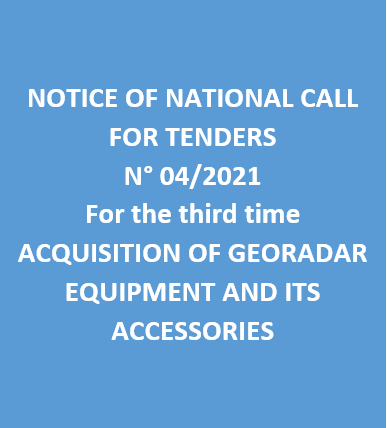| Annual program and technical progress report |
-

Activity Report 2023
-

Technical Program 2024
|
| Geocatalogue |

|
| Invitation to
tender |
-

REALIZATION OF THE TRAINING PLAN FOR THE YEAR 2022
-

ACQUISITION OF TWO SERVICE CARS
-

ACQUISITION OF GEORADAR EQUIPMENT AND ITS ACCESSORIES
|
|
Invest in Tunisia |

|
|
|
|
|
::
Documentation and Editions
>>
Research library
|
| |
|
[
Search by author
]
[
Search keyword
]
[
Search by index
]
[
Search by category
]
|
title of the reference :
|
Marine ostracods of the upper Miocene of the well Ashart 1 (Gulf of Gabes, southeastern Tunisia)
|
|
Publication Date:
|
1988
|
|
Author :
|
Bonaduce Gioacchino, Bismuth Hector, Ruggieri Giuliano, Russo Antonio
|
|
Catalogue type :
|
Livre
|
|
Catalogue reference :
|
Marine ostracods of the upper Miocene of the well Ashart 1 (Gulf of Gabes, southeastern Tunisia) " The ostracod fauna studied are from a Late Miocene-Early Pliocene interval 600 m thick, in Ashart 1, an offshore well in the Gulf of Gabes, southeastern Tunisia. Most of the the 131 samples analyzed contained rich and diversified populations of marine ostracods. In fact, 212 species have been found, belonging to 70 genera. Among them, eigth genera, 122 species and subspecies, considered as new, will be described elsewhere. In spite of contamination, usual in oil wells due to caving from higher levels previously drilled, some stratigraphical and palaeoenvironmental features have been established. The last occurence datum of a selected group of species has been defined with accuracy, and some assemblages have been tentatively recognized. The Tortonian-Messinian boundary did not show any important biostratigraphic event for the species taken into consideration. In fact, the Tortonian ""Sands of Somaâ"", a mollasic formation, are practically azoic: the apperently rich ostracod assemblages found in the samples of this unit are only contaminations from the overlying beds. Three abundance maxima have been noticed withing the ""Melqart limestones"" formation, a lithostratigraphic unit considered of Early Messinian age. The Upper Messinian, with the gypsiferous of the ""Oued bel Khedim"" formation, showed the rather abrupt extinction of most the marine species, the survival of some euryhaline taxa and the development of a brackish environment colonised by Cyprideis. The environment becoming too hostile, all forms of life disappeared and the upper 70 metres of the formation are azoic. Thus, in this area of the Tunisian shelf, the Messinian sediments perfectly registered the progressive deterioration of the environment, certainly related to the ""salinily crisis"" which affected the whole Mediterranean Sea at the same time. The first Early Pliocene sediments are characterised by the re-establishment of a normal marine environment, thus showing a sharp contrast with the underlying Upper Miocene series. During the Lower Messinian, the palaebathymetry, as deduced by the ostracod genera represented, seemed to be rather constant, with weak oscillations between 70 and 100 metres. This palaeoenvironmental interpretation suggests a subsidence phenomenon of more than 300 m during the Late Miocene. In: Evolutionary biology of Ostracoda.- Hanaï T., Ikeya N., Ishizaki K.: eds
référ. bibliogr. ostracoda ; milieu marin ; écologie ; biostratigraphie ; faune ; organisme euryhalien ; extinction ; Miocène supérieur ; Messinien ; puits Ashart 1 ; formation bel Khédim ; Tunisie ; Tunisie Sud Orientale ; Golfe de Gabès Bismuth Hector Ruggieri Giuliano Russo Antonio Bonaduce Gioacchino paleontologie s.n.
|
|
Indexation decimale :
|
paleontologie
|
|
Keywords :
|
ostracoda ; milieu marin ; écologie ; biostratigraphie ; faune ; organisme euryhalien ; extinction ; Miocène supérieur ; Messinien ; puits Ashart 1 ; formation bel Khédim ; Tunisie ; Tunisie Sud Orientale ; Golfe de Gabès
|
|
Summary :
|
" The ostracod fauna studied are from a Late Miocene-Early Pliocene interval 600 m thick, in Ashart 1, an offshore well in the Gulf of Gabes, southeastern Tunisia. Most of the the 131 samples analyzed contained rich and diversified populations of marine ostracods. In fact, 212 species have been found, belonging to 70 genera. Among them, eigth genera, 122 species and subspecies, considered as new, will be described elsewhere. In spite of contamination, usual in oil wells due to caving from higher levels previously drilled, some stratigraphical and palaeoenvironmental features have been established. The last occurence datum of a selected group of species has been defined with accuracy, and some assemblages have been tentatively recognized. The Tortonian-Messinian boundary did not show any important biostratigraphic event for the species taken into consideration. In fact, the Tortonian ""Sands of Somaâ"", a mollasic formation, are practically azoic: the apperently rich ostracod assemblages found in the samples of this unit are only contaminations from the overlying beds. Three abundance maxima have been noticed withing the ""Melqart limestones"" formation, a lithostratigraphic unit considered of Early Messinian age. The Upper Messinian, with the gypsiferous of the ""Oued bel Khedim"" formation, showed the rather abrupt extinction of most the marine species, the survival of some euryhaline taxa and the development of a brackish environment colonised by Cyprideis. The environment becoming too hostile, all forms of life disappeared and the upper 70 metres of the formation are azoic. Thus, in this area of the Tunisian shelf, the Messinian sediments perfectly registered the progressive deterioration of the environment, certainly related to the ""salinily crisis"" which affected the whole Mediterranean Sea at the same time. The first Early Pliocene sediments are characterised by the re-establishment of a normal marine environment, thus showing a sharp contrast with the underlying Upper Miocene series. During the Lower Messinian, the palaebathymetry, as deduced by the ostracod genera represented, seemed to be rather constant, with weak oscillations between 70 and 100 metres. This palaeoenvironmental interpretation suggests a subsidence phenomenon of more than 300 m during the Late Miocene.
|
|
Exemplaries :
|
TU1738
|
|
|
|
|
|
|
|



